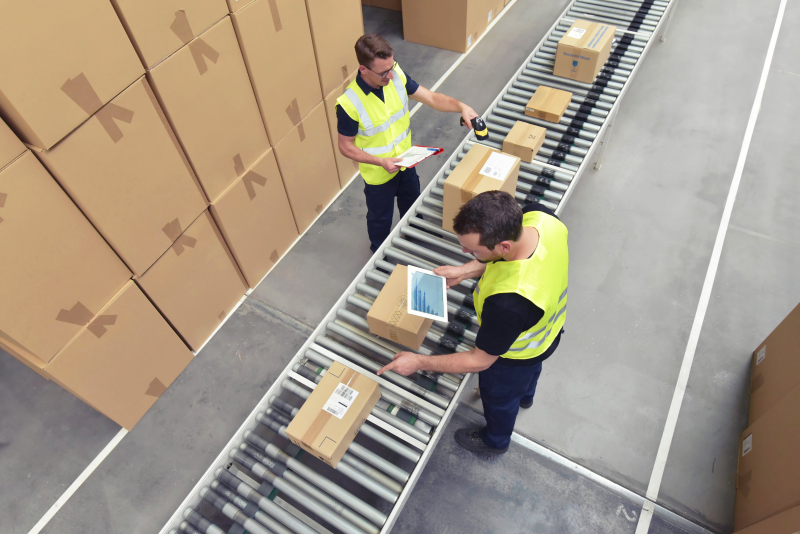Today’s third-party logistics (3PLs) warehouses are seeing more demand from brands, retailers, and other merchants to outsource their distribution and warehousing requirements than ever.
In essence, 3PLs are at the heart of the supply chain. With brands outsourcing their logistics and fulfillment needs to a third-party, 3PLs enable B2B, ecommerce, and omnichannel enterprises to function more efficiently with their inventory management, warehousing, and/or fulfillment.
State of the Supply Chain
The supply chain is changing. Not only do brands care about the footprint of their supply chain, many are striving for net-zero carbon footprints or working on the de-carbonization of their supply chain. As such, to compete for business of these brands, 3PLs must first look at their own approach to going green.
Understanding the environmental footprint of your logistics operations is the first step towards a green supply chain. As brands continue to transition towards becoming more sustainable, third-party logistics (3PLs) warehouses will likely follow suit. With sustainability becoming a primary goal of many brands, 3PL sustainability can become a perk that many 3PLs can use to entice brands to work with them. Brands like Patagonia, Pact, and Martha Stewart’s Marley Spoon have prefaced an eco-friendly approach that centers around creating the least amount of environmental impact. This paired with a preference to work with other green or sustainable companies places 3PLs in a position for change.
Why 3PL Sustainability Matters
Working with brands is how 3PL warehouses earn their revenue. However, with many brands going green and implementing more sustainable practices, brands will likely work with 3PLs that also practice sustainability. Here are a few reasons why sustainability matters to 3PL warehouses:
Reducing Waste
Using comprehensive technology to streamline a full warehouse's operations increases efficiency and production while also improving accuracy, reporting, and reaction times. Operational and personnel costs are reduced by reducing the amount of time spent processing paperwork. Automated technology (e.g., mobile-barcode scanning) can help a 3PL warehouse evolve to becoming green. With reduced waste and more efficient processes, 3PLs can change the way they view waste and the way they operate their business while also saving money and time.
Consumer Intentions and Eco-Friendly Packaging
According to IBM’s Research Insights, more than 57% of consumers are willing to change their buying habits to improve sustainability. With such a large portion of consumers wanting change, being on the forefront of sustainability initiatives matters.
3PLs are well-versed in packaging. They may develop supplier relationships to provide specialized or one-of-a-kind packages using a variety of materials and offer this range of packaging to the brands they serve. 3PLs can improve sustainability by employing environmentally friendly packing materials like cardboard and paperboard boxes. These paper-based choices are durable and totally recyclable, making them ideal for long-distance commutes.
Reduce Carbon Footprint
Consumers are demanding a change in sustainability and brands are passing that demand on to 3PLs. 3PLs are pioneering using alternative fuels like liquified natural gas. Creating an eco-friendly supply chain can further the transition to a reduced carbon footprint. With consumer demands for sustainability increasing, some trucking companies have evolved into more efficient forms of transport such as implementing electric vehicles. These forward-looking sustainability practices not only help the environment, but help 3PLs become more competitive when attracting new business.
Gen Z Is Changing the Market
As Generation Z, people born from the mid 1990s to the early 2010s, enters the consumer market, the workforce, and the voting booth, they have demonstrated a commitment to making the world a better place. According to a recent Deloitte survey, climate change and protecting the environment are the number one concern for Gen Z.
This growing concern for sustainable products shows in their buying behavior. According to a 2020 survey, 73% of Gen Z consumers were willing to spend more on sustainable products. With the age of Gen Z increasing, it’s important to note the implications that they create. A very large portion of Gen Z has already entered the market and with the change in their mentality towards products, their buying decisions influence consumer demand for green and eco-friendly products. But their buying decisions don’t stop with the products themselves, they will hold brands to a higher standard and look for brands that uphold commitments to sustainability throughout their supply chain, making this an issue for the brands and the vendors they use.
Not only does this mean more pressure from brands for 3PLs to implement sustainable practices, but also from a workforce that 3PLs wants to attract. With the warehouse labor shortage, finding new ways to Gen Z could be the difference between fully staffed or paying significant overtime. Gen Z wants to work for companies that align with their beliefs, so becoming green also serves as a differentiator in the hiring market as well.
What Does This Mean for 3PLs?
Brands have evolving expectations for their supply chain partners, especially with the 3PL warehouses they choose to partner with. 3PL warehouses can lead the way for a new green environment or risk getting left behind. With the growing concern for the environment among Gen Z shoppers, brands are starting to follow the trend. Sustainability matters and will become a large goal for many companies over the next few years, making it important for all 3PLs to consider.
For a better world (and to remain competitive), 3PLs need to adopt sustainable practices. Many 3PLs have taken the first step by implementing a Warehouse Management System (WMS) to start the paperless warehouse process, but is that enough? With the approaching new year, 3PLs should consider the steps they need to take to become green.
Learn more about warehousing best practices by subscribing to Extensiv’s blog.
-
You’ll read about:
Be the first to know
Subscribe to our newsletter





